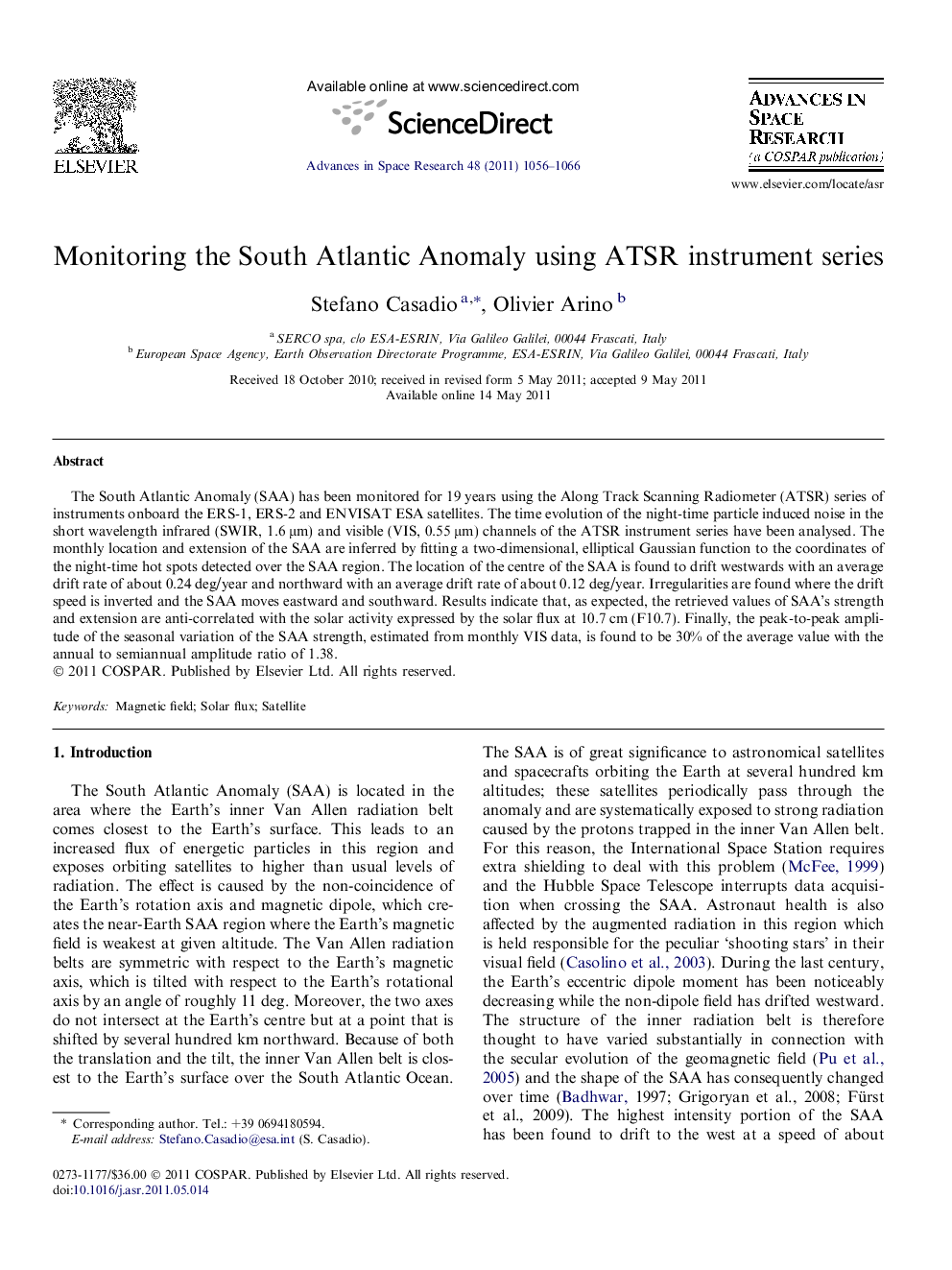| Article ID | Journal | Published Year | Pages | File Type |
|---|---|---|---|---|
| 1765127 | Advances in Space Research | 2011 | 11 Pages |
The South Atlantic Anomaly (SAA) has been monitored for 19 years using the Along Track Scanning Radiometer (ATSR) series of instruments onboard the ERS-1, ERS-2 and ENVISAT ESA satellites. The time evolution of the night-time particle induced noise in the short wavelength infrared (SWIR, 1.6 μm) and visible (VIS, 0.55 μm) channels of the ATSR instrument series have been analysed. The monthly location and extension of the SAA are inferred by fitting a two-dimensional, elliptical Gaussian function to the coordinates of the night-time hot spots detected over the SAA region. The location of the centre of the SAA is found to drift westwards with an average drift rate of about 0.24 deg/year and northward with an average drift rate of about 0.12 deg/year. Irregularities are found where the drift speed is inverted and the SAA moves eastward and southward. Results indicate that, as expected, the retrieved values of SAA’s strength and extension are anti-correlated with the solar activity expressed by the solar flux at 10.7 cm (F10.7). Finally, the peak-to-peak amplitude of the seasonal variation of the SAA strength, estimated from monthly VIS data, is found to be 30% of the average value with the annual to semiannual amplitude ratio of 1.38.
